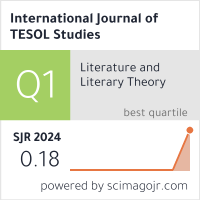2632-6779 (Print)
2633-6898 (Online)


Scopus
Ulrich’s Periodicals Directory (ProQuest)
MLA International Bibliography
MLA Directory of Periodicals
Directory of Open Access Journals (DOAJ)
QOAM (Quality Open Access Market)
British National Bibliography
WAC Clearinghouse Journal Listings
EBSCO Education
ICI Journals Master List
ERIH PLUS
CNKI Scholar
Gale-Cengage
WorldCat
Crossref
Baidu Scholar
British Library
J-Gate
ROAD
BASE
Publons
Google Scholar
Semantic Scholar
ORE Directory
TIRF
China National Center for Philosophy and Social Sciences Documentation
Neil Cowie
Okayama University, Japan
Mehrasa Alizadeh
International Professional University of Technology, Osaka, Japan
Abstract
There is relatively little research on how teachers can prepare to teach languages using Virtual Reality (VR) applications. There is also little longitudinal research on student self-directed learning using VR. In response to this lack of reported research, this study explores the educational affordances of VR with a small group of four university students and one high school student in Japan who met online weekly for an academic year starting in April 2021. In the first stage of research, the seven participants used Oculus Quest 2 Head Mounted Displays (HMDs) in the Engage collaborative VR space. The five students were asked to investigate and review VR apps that were connected to their academic disciplines. Initial results showed a large number of positive effects of working in VR but almost all participants suffered some kind of cybersickness. For this reason, in the second stage of research, it was decided to move from HMDs to a web-based browser (Mozilla Hubs) in which participants created their own VR rooms to teach each other about one aspect of their own academic field. Finally, in the third phase of the project, the students created their own 360-degree virtual tours using ThingLink. This paper shows how university students can learn in a self-directed VR environment. It also describes the challenges facing teachers who wish to use VR in their teaching, including technical issues of wifi and computer processing power, training in the VR environment, ethical and health concerns, and, most importantly, the pedagogical knowledge needed to best support students.
Keywords
Virtual Reality (VR), self-directed learning, teacher development, VR apps, immersive VR